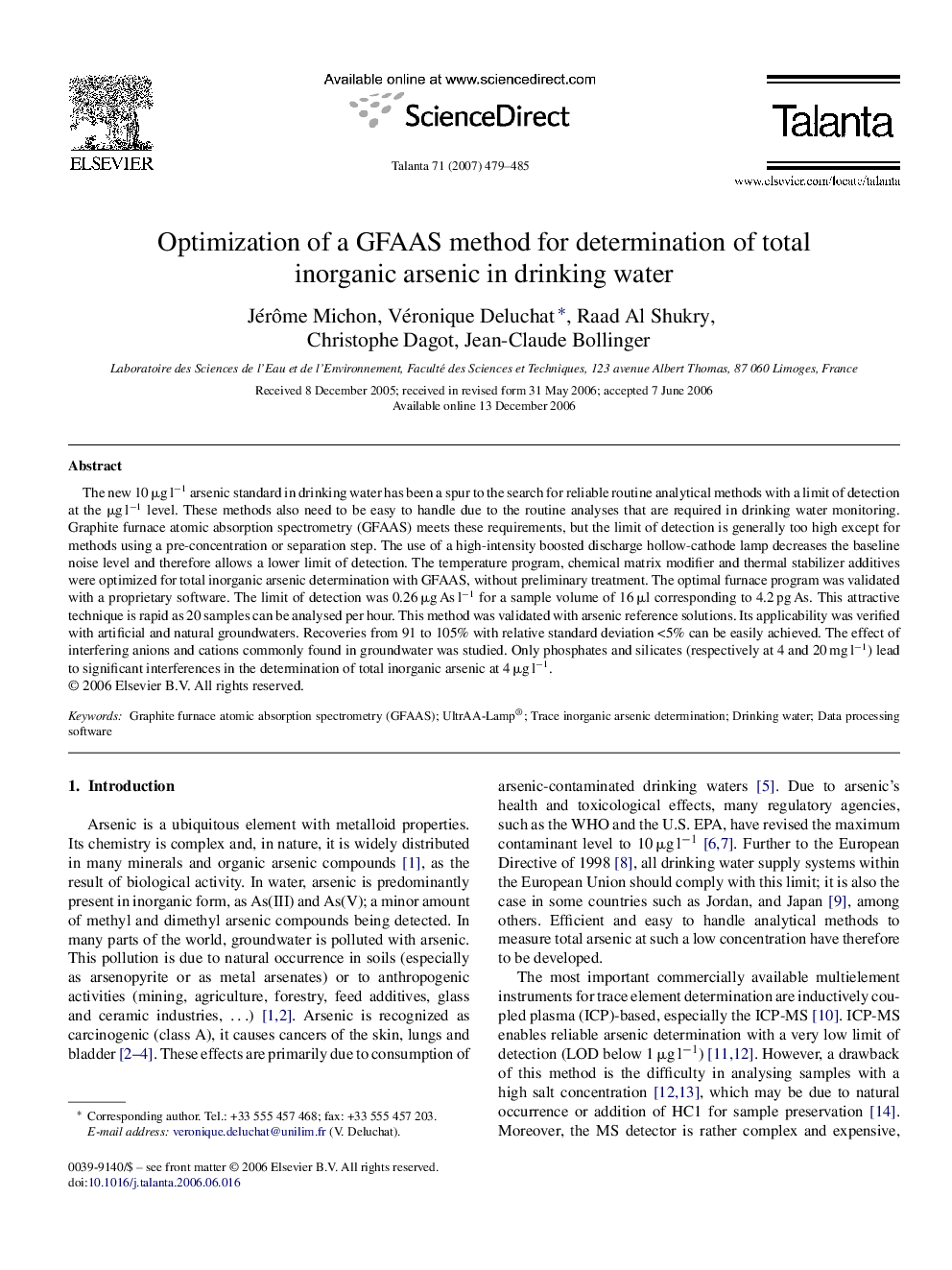| Article ID | Journal | Published Year | Pages | File Type |
|---|---|---|---|---|
| 1246098 | Talanta | 2007 | 7 Pages |
The new 10 μg l−1 arsenic standard in drinking water has been a spur to the search for reliable routine analytical methods with a limit of detection at the μg l−1 level. These methods also need to be easy to handle due to the routine analyses that are required in drinking water monitoring. Graphite furnace atomic absorption spectrometry (GFAAS) meets these requirements, but the limit of detection is generally too high except for methods using a pre-concentration or separation step. The use of a high-intensity boosted discharge hollow-cathode lamp decreases the baseline noise level and therefore allows a lower limit of detection. The temperature program, chemical matrix modifier and thermal stabilizer additives were optimized for total inorganic arsenic determination with GFAAS, without preliminary treatment. The optimal furnace program was validated with a proprietary software. The limit of detection was 0.26 μg As l−1 for a sample volume of 16 μl corresponding to 4.2 pg As. This attractive technique is rapid as 20 samples can be analysed per hour. This method was validated with arsenic reference solutions. Its applicability was verified with artificial and natural groundwaters. Recoveries from 91 to 105% with relative standard deviation <5% can be easily achieved. The effect of interfering anions and cations commonly found in groundwater was studied. Only phosphates and silicates (respectively at 4 and 20 mg l−1) lead to significant interferences in the determination of total inorganic arsenic at 4 μg l−1.
